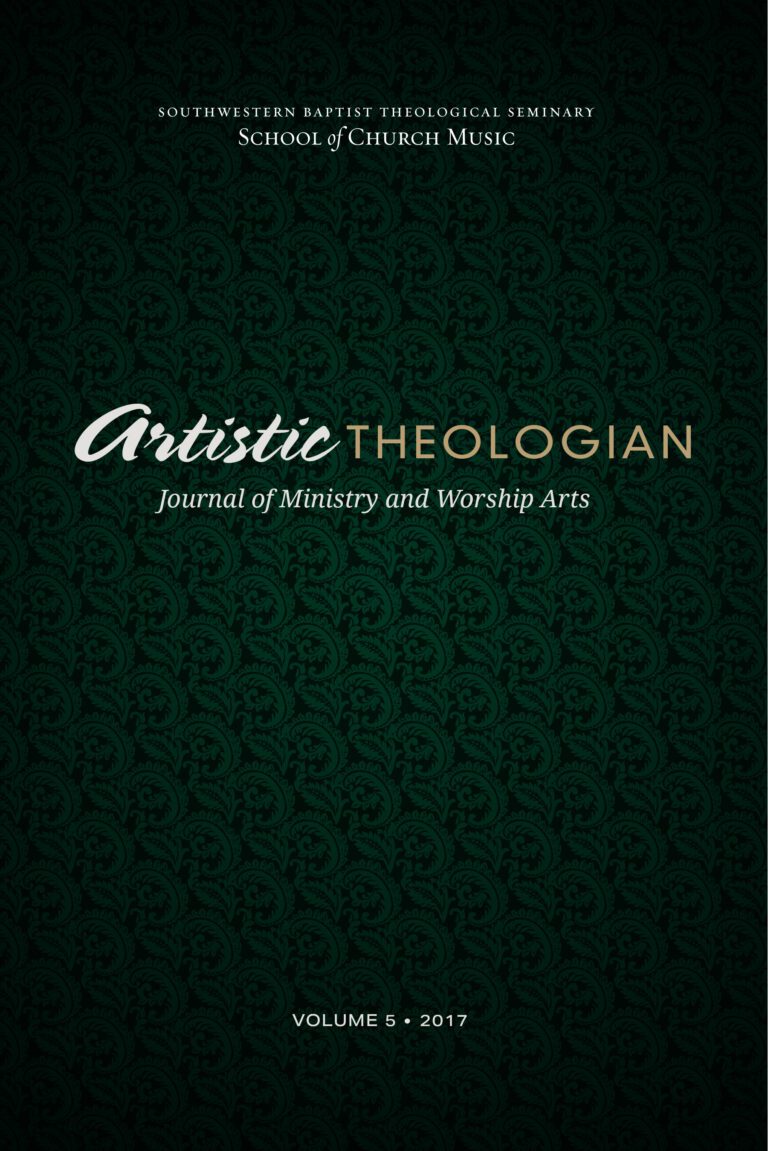
Forming Disciples through Corporate Worship
Artistic Theologian
Volume 5, Summer 2017
Editor-in-Chief: Scott Aniol
Seeking the Face of God: Evangelical Worship Reconceived, by J. Daniel Day. Macon, GA: Nurturing Faith, 2013. 287 pp. $18.00.
Daniel Day, longtime Baptist pastor and former Professor of Christian Preaching and Worship at Campbell University Divinity School, draws upon church history, experience teaching college-level worship classes, and decades of personal biblical study and pastoring to remind evangelicals that worship is about God, or, to use the King James metaphor, worship is seeking the face of God. As the book’s subtitle implies, Day believes evangelical worship needs to be reconceived to be less about us and more about God.
Day’s opening chapter confronts evangelicals with an accusation of worship confusion, likening today’s practices to a game without rules, and posits that recovering purposeful worship is essential to the Church’s vitality. Next, he evaluates four worship models, three that drew evangelicals off course and one offered as faithful to biblical intent and consistent with the Church’s historical practices. A third chapter reviews two millennia of Christian worship to ascertain enduring principles of worship. His fourth chapter proposes a worship model for the twenty-first century. Day concludes with a new definition of worship and describes its implications.
Day’s critique of today’s evangelical worship is on point with an analogy of a rule-less game and a striking comparison to the biblical observation that “all the people did what was right in their own eyes” (Judg 21:25, NRSV). He counters that authentic “worship is not simply a matter of personal taste” (6) but a “definable ‘thing’” (7) with characteristics that “incorporate enduring essentials” (7). In other words, Christian worship does have rules, and these rules “actually enable and enliven” worship (13). However, he warns when we re-discover these rules we may find that “all we like sheep have gone astray” (Isa 53:8).
Day ascribes our confusion to neglecting the vertical-dialogical aspect of Christian worship, asserting this stems from three movements within evangelical worship’s recent history: Charles Finney’s “New Measures,” Robert Schuler’s “Hour of Power” television program, and the Pentecostal movement. Day characterizes these as Worship as Evangelism, Worship as Inspiration/Entertainment, and Worship as “Experiencing.” A full chapter—a worthwhile read of its own—describes these three movements’ origins, philosophies, and practices, and their contribution to our current worship chaos.
Day argues that through adoption of Finney’s “New Measures,” evangelicals lost worship’s New Testament moorings; that under Schuler’s entertainment model worship “became no longer about God, but about the performers” (56); and that Pentecostalism’s model replaced seeking the face of God with seeking our feelings (80). Day thus finds evangelicals believing every service must be compelling enough to win the lost, inspirational enough to attract outsiders, and emotional enough to demonstrate the Holy Spirit’s presence. He finds this both an impossible task and one without biblical warrant (86–87).
Here Day concludes that our understanding of worship must be reconceived: “It is not about selling God, nor is it about inspiring people with God-ideas, or generating electric moments when God may be experienced” (87). In fact, he concludes worship has no utilitarian purpose at all and, to quote Marva Dawn, “is a sublimely ‘royal’ waste of time” (88). The remainder of his book argues his vision of authentic worship.
Day proposes an alternative “truer to the biblical intent of worship” that he calls “seeking God’s face” (90). He further aims to regain contact with our theological heritage, arguing such contact reduces our “conceit that the Spirit was doing nothing of true importance until our immediate forbears came on the scene” (111).
To support his point of view, he escorts the reader on a high-level survey of church worship history, drawing applicable principles from pre- and post-Edict of Milan eras, and discovering seven landmarks, or “rules,” that “qualitatively differentiate corporate Christian worship” (180). This survey leads him to wonder “if our present worship conversations are nearly radical enough,” (138) suggesting we ought to spend more time thinking about worship’s substance rather than its style.
Under the rubric of “seeking the face of God,” and armed with the seven historical landmarks, Day proposes a worship order “both new and ancient” (191): worship with a Christological focus, “worship in the shape of Jesus’ life” (193). Applying the overarching Gospel narrative, Day envisions a four-part worship order: a Bethlehem moment, a Galilee moment, a Jerusalem moment, and an Olivet moment. In other words: a call to worship, revelation, reconciliation, and mission. He argues that this structure focuses the church on Christ’s life, forms it in His image, honors Scripture, reinforces a theological framework of worship, contains a rational narrative, incorporates worshipers into the gospel story, and lastly, is also the church’s historical norm of gathering, Word, table, and sending. Elaborating at length on this structure, he provides a biblical rationale for each phase, and offers detailed, practical suggestions for their implementation in an evangelical setting.
Day concludes that “Ours is to offer worship that is about God” (279), and this work does much to help us achieve that end. Easily digestible, well-researched, and annotated, it deserves a place on every worship planner’s bookshelf as a worthy companion to Bryan Chapell’s Christ-Centered Worship for both inspiration and reference. The format, colorful inter-chapter “excursions,” and discussion questions also make it suitable for a college or discipleship class text. Indeed, as Day argues that congregations need to be “taught how to worship” (275), this book would be a good place to start.
Robert Myers
Southwestern Baptist Theological Seminary





